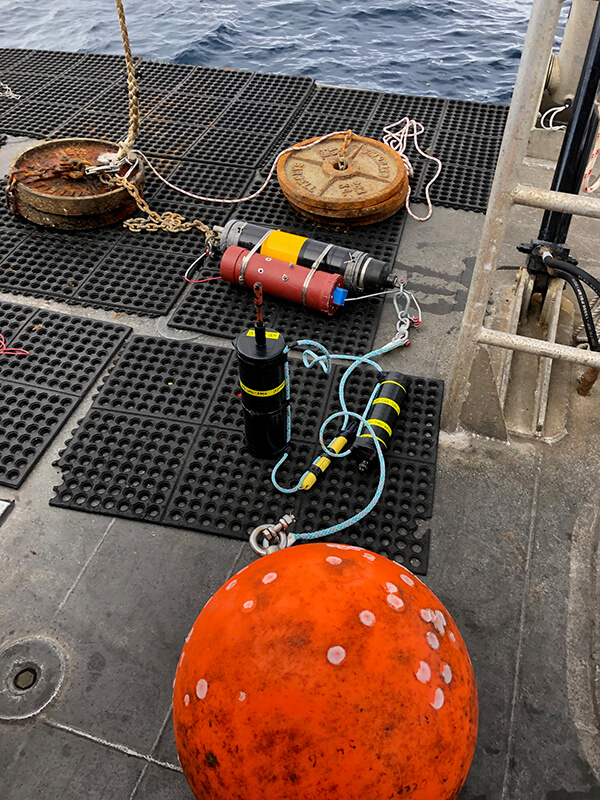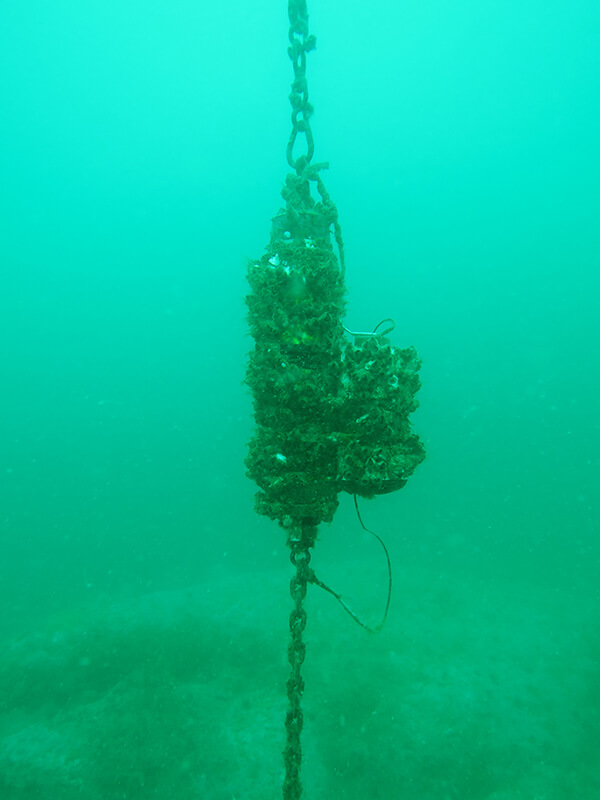Soundscape

How sanctuary species use sound, and how species and habitats may be affected by sound, is an important area of study as the amount of underwater noise in our coastal oceans continues to increase. Under the guidance of NOAA's Ocean Noise Strategy Roadmap, the sanctuary is dedicated to better understanding underwater sound and has been monitoring the sanctuary soundscape since 2017 using stationary recorders. Sanctuary partners have been monitoring sound in and around the sanctuary for over two decades. Combined, the sanctuary and partners are characterizing the soundscape in both shallow and deep water listening stations across the entire sanctuary. Each year, a NOAA Teacher-at-Sea, many students, and several interns contribute to the sanctuary's sound monitoring research.
Where are we listening, and why?

Passive acoustics is a non-invasive way to remotely collect sound data across large geographic regions and periods of time that can inform a number of ecological investigations. NOAA and the National Park Service maintain 12 deep water Noise Reference Stations (NRS) across protected areas and areas of interest nationally. The NRS station in Channel Islands National Marine Sanctuary has been recording ambient sound at about 1,000 meters (3,380 feet) south of Santa Cruz Island since 2014. Since deep water listening stations operated by sanctuary partners have been in place for several years, in 2017 the sanctuary initiated shallow water stations in collaboration with the U.S. Navy, NOAA Southwest Fisheries Science Center, and others. This SanctSound monitoring network aims to characterize baseline sound levels, intensities, and variation across habitats and time. Each of the listening locations have been carefully selected to better understand sound sources of interest, such as vessels. Some of the stationary sound recorders are paired with acoustic telemetry receivers to describe how species like fish use sound during certain times of the year and/or for specific reproductive, migratory, or social behaviors. National marine sanctuaries are working to develop trackable sound metrics for condition reporting, as well as education and outreach products and interactive learning platforms.
Soundscape Monitoring Partners
Check out the sound monitoring work of some of our regional partners:
- NOAA Ocean Acoustics Program
- Naval Postgraduate School
- NOAA Southwest Fisheries Science Center
- Scripps Institution of Oceanography Acoustic Ecology Laboratory
- NOAA-Navy Noise Reference Station Network
- Monterey Bay Aquarium Research Institute
- Benioff Ocean Initiative
- California Cooperative Oceanic Fisheries Investigations (CalCOFI)
- Cascadia Research
- Southall Environmental Associates, Inc.
- Moss Landing Marine Laboratory



